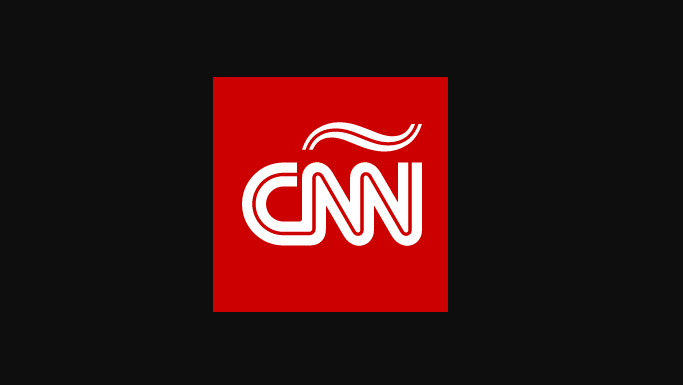Rhetorical devices are powerful tools in crafting persuasive email copy. These techniques can captivate your audience, evoke emotional responses, and drive action. Understanding how to effectively use these devices can significantly enhance the impact of your email campaigns. This article will explore various rhetorical devices and their application in email marketing to boost persuasion and engagement.
Understanding Rhetorical Devices
Rhetorical devices are language techniques used to persuade and influence an audience. They appeal to emotions, logic, and credibility, making the message more compelling and memorable. Some common rhetorical devices include ethos, pathos, logos, repetition, metaphors, and analogies. By incorporating these devices into your email copy, you can craft messages that resonate with your readers and drive desired actions.
Using Ethos to Build Credibility
Ethos refers to the credibility or ethical appeal of the writer. In email copy, establishing ethos involves demonstrating your expertise, trustworthiness, and authority on the subject. This can be achieved by sharing relevant qualifications, experiences, or endorsements from reputable sources. For example, if you're promoting a new product, highlighting positive reviews or testimonials from industry experts can enhance your credibility and persuade recipients to consider your offer.
Incorporating Pathos to Evoke Emotions
Pathos appeals to the emotions of your audience. By tapping into feelings such as fear, joy, or empathy, you can create a strong emotional connection with your readers. In email copy, this can be done through storytelling, vivid imagery, or emotionally charged language. For instance, if you're fundraising for a cause, sharing a personal story of someone impacted by the issue can evoke sympathy and motivate recipients to contribute.
Leveraging Logos to Appeal to Logic
Logos involves appealing to the logical and rational side of your audience. This device relies on facts, statistics, and logical arguments to persuade readers. In email marketing, incorporating clear data, logical explanations, and well-structured arguments can enhance the persuasive power of your message. For example, if you're promoting a software solution, providing statistics on how it improves productivity can convince recipients of its value.
The Power of Repetition
Repetition reinforces key messages and ensures that important information sticks with your audience. By repeating specific phrases or concepts, you can emphasize their significance and increase retention. In email copy, strategic repetition can highlight the main benefits of your offer or the urgency of a call to action. For instance, repeating the phrase "limited time offer" can create a sense of urgency and encourage recipients to act quickly.
Utilizing Metaphors for Enhanced Understanding
Metaphors create vivid images and make complex ideas more relatable by comparing them to familiar concepts. In email copy, metaphors can simplify abstract concepts and make your message more engaging. For example, if you're describing a new service, you might use a metaphor like "a Swiss army knife for your business" to convey versatility and usefulness in a relatable way.
Analogies to Clarify and Persuade
Analogies draw comparisons between two different things to highlight similarities and make a point clearer. By relating unfamiliar concepts to something your audience already understands, analogies can make your message more accessible and persuasive. In email marketing, using analogies can help explain complex features or benefits in a simple and relatable manner. For example, comparing a new product to a well-known solution can help recipients grasp its advantages more easily.
The Role of Alliteration in Captivating Attention
Alliteration involves repeating the initial consonant sounds in a series of words. This rhetorical device can make your email copy more memorable and engaging by creating a rhythmic and pleasing effect. For example, using phrases like "Fantastic Features" or "Bold Benefits" can capture attention and reinforce key points. In email subject lines or headings, alliteration can help your message stand out in a crowded inbox.
Harnessing the Impact of Hyperbole
Hyperbole involves exaggerated statements that emphasize a point or create a strong impression. While it should be used sparingly, hyperbole can add excitement and urgency to your email copy. For example, phrases like "the best deal you'll ever see" or "unbelievable savings" can create a sense of enthusiasm and compel recipients to take action. However, be cautious not to overuse hyperbole, as it may come across as insincere.
Using Questions to Engage and Stimulate Thinking
Rhetorical questions prompt readers to think about a topic or consider a perspective without expecting an actual answer. By posing questions in your email copy, you can engage recipients and encourage them to reflect on their needs or desires. For instance, asking "Are you ready to transform your business?" can stimulate interest and prompt recipients to explore your offer further.
Creating a Sense of Urgency with Imperatives
Imperatives are direct commands or requests that urge the reader to take action. In email copy, using imperatives can create a sense of urgency and prompt immediate responses. Phrases like "Act now," "Don't miss out," or "Sign up today" can encourage recipients to take the desired action without delay. Combining imperatives with limited-time offers or deadlines can further enhance their effectiveness.
Balancing Emotional Appeal with Logical Arguments
While rhetorical devices like pathos and logos are powerful individually, their combined use can create a more persuasive message. Balancing emotional appeal with logical arguments ensures that your email copy resonates on both an emotional and rational level. For example, presenting a heartfelt testimonial alongside factual benefits can create a compelling and well-rounded argument for your offer.
Avoiding Overuse of Rhetorical Devices
While rhetorical devices can enhance your email copy, overusing them may dilute their impact or make your message seem insincere. It's important to use these devices strategically and in moderation to maintain the authenticity and effectiveness of your communication. Focus on integrating rhetorical devices that align with your message and audience to achieve the best results.
FAQs About Using Rhetorical Devices in Email Copy
1. What are rhetorical devices in email copy?
Rhetorical devices are techniques used to persuade and influence readers by appealing to their emotions, logic, and credibility. Common devices include ethos, pathos, logos, repetition, metaphors, and analogies.
2. How can ethos improve my email copy?
Ethos builds credibility by demonstrating your expertise, trustworthiness, and authority. Including qualifications, testimonials, or endorsements can enhance your credibility and persuade recipients to trust your message.
3. What role does pathos play in persuasive emails?
Pathos appeals to the emotions of your audience, creating a strong emotional connection. Using storytelling, vivid imagery, or emotionally charged language can evoke feelings that motivate recipients to take action.
4. How can I use logos effectively in email copy?
Logos involves presenting logical arguments and facts to persuade readers. Incorporating clear data, statistics, and well-structured arguments can appeal to the rational side of your audience and enhance your message's persuasiveness.
5. What is the impact of repetition in email marketing?
Repetition reinforces key messages and ensures important information is remembered. By repeating phrases or concepts, you can emphasize their significance and increase retention, such as highlighting the main benefits of your offer.
6. How can metaphors and analogies enhance email copy?
Metaphors and analogies simplify complex ideas by comparing them to familiar concepts. This makes your message more relatable and engaging, helping recipients understand and remember your key points more easily.
7. When should I use hyperbole in my emails?
Hyperbole can create excitement and urgency by emphasizing a point with exaggerated statements. Use it sparingly to avoid appearing insincere, and combine it with other rhetorical devices to enhance its effectiveness.
8. How can rhetorical questions engage readers?
Rhetorical questions prompt readers to think about a topic or consider a perspective, engaging them and encouraging reflection. Posing relevant questions can stimulate interest and prompt further exploration of your offer.
9. What are imperatives, and how do they create urgency?
Imperatives are direct commands or requests that urge immediate action. Phrases like "Act now" or "Sign up today" create a sense of urgency, prompting recipients to respond quickly.
10. How can I balance emotional appeal and logical arguments in my emails?
Combining emotional appeal (pathos) with logical arguments (logos) ensures your message resonates on both an emotional and rational level. Presenting heartfelt testimonials alongside factual benefits creates a well-rounded and persuasive argument.
Get in Touch
Website – https://www.webinfomatrix.com
Mobile - +91 9212306116
Whatsapp – https://call.whatsapp.com/voice/9rqVJyqSNMhpdFkKPZGYKj
Skype – shalabh.mishra
Telegram – shalabhmishra
Email -info@webinfomatrix.com


.jpg)






 English (US) ·
English (US) ·